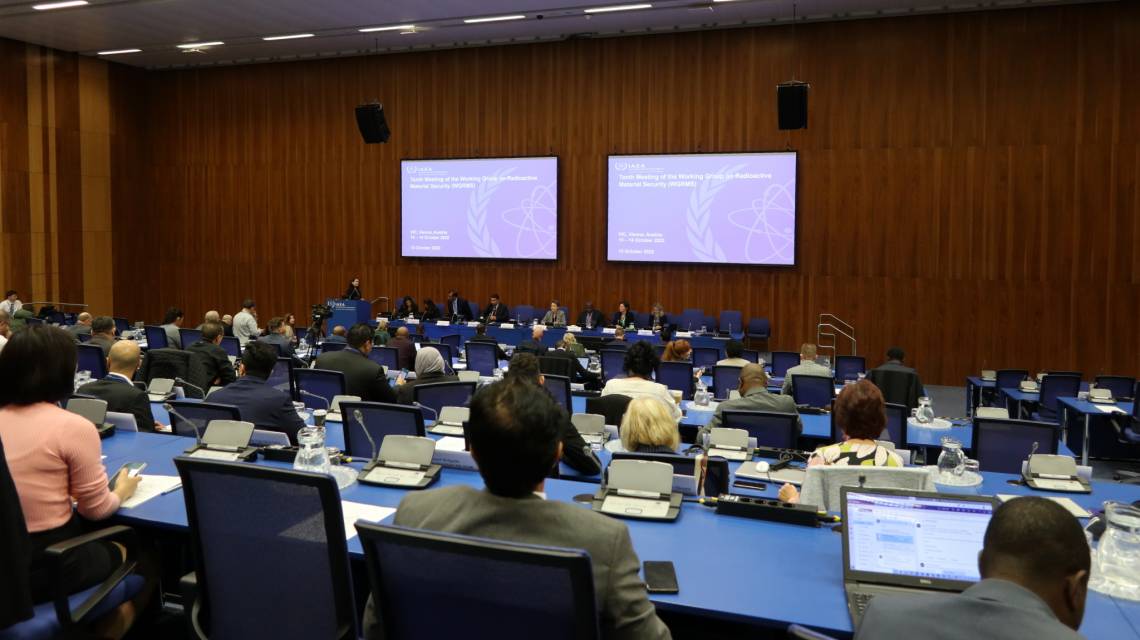“All about the security of radioactive material.” This motto captures the discussions recently held among the IAEA experts and the working group on radioactive material security (WGRMS), who covered a range of issues related to the protection and control of radioactive material, towards promoting and enhancing nuclear security worldwide.
“The significant IAEA work for the security of radioactive material globally requires collaboration and commitment from all stakeholders,” said Elena Buglova, Director of the IAEA Division of Nuclear Security, in her opening remarks. “For a decade now, the WGRMS has been providing consolidated input for improving planning and delivery of IAEA technical assistance to countries under the nuclear security programme.”
The purpose of the WGRMS is to foster coordination, collaboration and communication among relevant stakeholders to optimize the delivery of the IAEA assistance related to the protection and control of radioactive material, including radioactive sources. The recent meeting marked one decade since the WGRMS’ establishment.
Over eighty participants from 60 countries and two organizations discussed the latest developments in various technical areas, including updates about nuclear security guidance and large-scale projects such as one on sustainable management of disused sealed radioactive sources (DSRS). National experts presented case studies, and shared good practices, such as the inclusion of financial provisions for the management of newly acquired sealed radioactive sources once they reach the end of their useful life.
Representatives from Brazil presented a novel theoretical model for applying optimized nuclear security measures at facilities, based on identified vulnerabilities and a graded approach, and participants from the United States of America shared a thought-provoking video showcasing the evolving perspective on threats posed by people with authorized access to facilities handling radioactive material, known as insider threats.
"The highly interactive case study sessions showed the possibility, but also the reality of malicious actions involving radioactive material, thus allowing a better appreciation of the need to establish a robust security regime in our countries,” said Moustapha Tall, Chair of the meeting and Director of Inspections in the Radiation Protection and Nuclear Safety Authority (ARSN) of Senegal. “The lively discussions and information sharing made it possible to identify approaches to strengthen cooperation and coordination in order to improve the security of radioactive sources worldwide,” Tall added.
Among the most popular sessions were those related to the role of technology in assisting the security of radioactive material, such as the emerging role of computer security for the protection of radioactive material against theft and the devices utilizing them against sabotage.
Participants were provided with in depth information on the IAEA’s integrated approach for radiation safety and security of radioactive material for the efficient management of radioactive sources, and specifically about the launch of a new Advisory Mission on Regulatory Infrastructure for Radiation Safety and Nuclear Security (RISS), and the implementation of Regulatory Infrastructure Development Projects (RIDP) in Africa, in the Caribbean and Latin America.







